HMS Prince of Wales has fired her Phalanx close-in weapon system as part of a training exercise.
The Phalanx CIWS is a close-in weapon system for defending against anti-ship missiles. It was designed and manufactured by the General Dynamics Corporation, Pomon Division (now a part of Raytheon).
Consisting of a radar-guided 20 mm (0.78 in) Gatling gun mounted on a swivelling base, the Phalanx is used by multiple navies around the world, including the Royal Navy and the United States Navy.
Angry Minion… engage!💥
Our Phalanx mounts are affectionately nicknamed Charlotte, Debbie, and Sarah… disturb them at your peril!#aWEsome pic.twitter.com/FwvcVceSaL
— HMS Prince of Wales (@HMSPWLS) November 19, 2024
The vessel will also soon be opening to the public. HMS Prince of Wales, is heading to Liverpool for a week-long visit, marking her first stay in the city since March 2020.
The aircraft carrier’s seven-day visit will include community engagement, public tours, and a Freedom of the City parade, according to a press release.
Entry is by ticket only and you must apply in advance by clicking here.
The Portsmouth-based warship, affiliated with Liverpool, will dock at the Cruise Liner Terminal on Monday, December 2, following training exercises in UK waters. The visit offers the ship’s 800-strong crew, including local sailors, the chance to connect with the community and highlight their contributions to the Royal Navy.
Commanding Officer Captain Will Blackett expressed pride in bringing the carrier back to Liverpool, a city with deep historical ties to the Royal Navy. He noted that the visit is a culmination of rigorous autumn training, providing an opportunity for the crew to showcase their work. “The ship’s company deserve recognition for their remarkable efforts, and this visit allows us to show you what we do,” he stated.
Among the crew is Sub Lieutenant Yasemin Dilek, a junior marine engineering officer from Liverpool, who described the carrier as her “home away from home.” She highlighted the ship’s connection to the city through its Liverpool-themed passageway names, adding, “The first sight of those two Liver birds, set against our gorgeous city skyline, will be a highlight I will cherish for the rest of my career.”
During the visit, the ship will host public tours on December 7 and 8, welcoming 10,000 guests each day. Tickets are required and can be obtained in advance. Visitors will experience a glimpse of life aboard the 932-foot warship, which serves as a floating symbol of British maritime strength and innovation.
The carriers
The Queen Elizabeth-class aircraft carriers are the largest and most advanced warships in the Royal Navy, designed to serve as the primary components of the UK’s Carrier Strike Group. This class includes two vessels: HMS Queen Elizabeth, commissioned in December 2017, and HMS Prince of Wales, commissioned in December 2019. Built by the Aircraft Carrier Alliance, these carriers were developed at a total cost of approximately £7.6 billion. They replace the earlier Invincible-class carriers and are built to support a variety of maritime operations.
Each Queen Elizabeth-class carrier has a displacement of 65,000 tonnes and a length of 284 metres. Their propulsion is provided by integrated electric systems combining Rolls-Royce Marine Trent MT30 gas turbines with Wärtsilä diesel engines, producing a total power of 158,800 horsepower. These vessels are capable of speeds over 25 knots and can travel up to 10,000 nautical miles on a single mission. They have berths to accommodate up to 1,600 personnel, including crew and air support units.
The carriers can house an air wing of up to 40 aircraft, including F-35B Lightning II jets and Merlin helicopters for roles such as anti-submarine warfare and airborne early warning. The flight deck, equipped with a 12º ski jump, is optimised for short takeoff and vertical landing (STOVL) operations, enabling the launch and recovery of F-35B aircraft. The hangar deck provides additional space for the maintenance and storage of these aircraft, with dimensions of 155 m x 34 m x 7 m.
For defence and situational awareness, each carrier is outfitted with a Phalanx Close-In Weapons System (CIWS), 30 mm DS30M Mk2 guns, and heavy machine guns. The radar and sensor systems include the S1850M long-range radar and Type 997 Artisan 3D radar, providing extensive tracking and detection capabilities to support the carrier’s operations.
At the UK Defence Journal, we aim to deliver accurate and timely news on defence matters. We rely on the support of readers like you to maintain our independence and high-quality journalism. Please consider making a one-off donation to help us continue our work. Click here to donate. Thank you for your support!


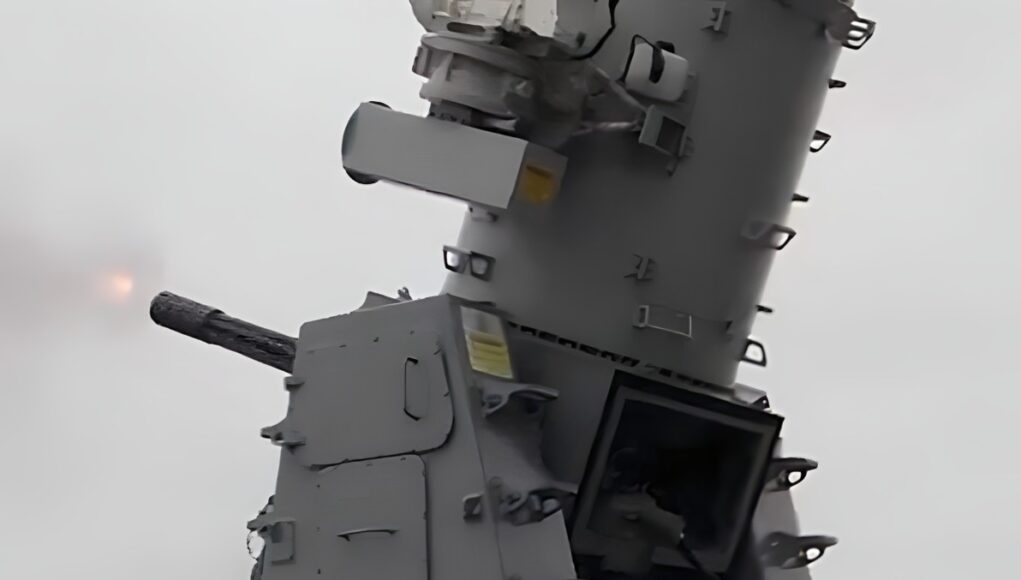
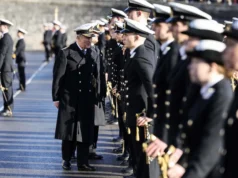

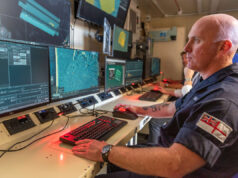
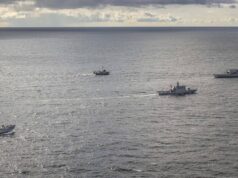


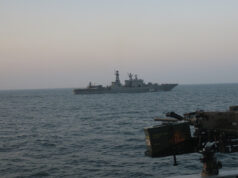
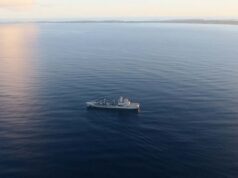
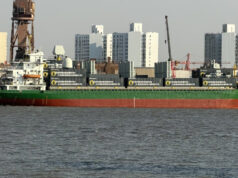
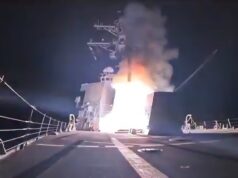

To have a carrier defended by just 3x phalanx is just incompetence and reflective of a culture where cost cutting costs lives. Health and safety is number 1 concern in peacetime but somehow doesn’t apply when it comes to armed capabilities.
bloody ridiculous phalanx or phalanx. if we lost one of the carriers it would just about remove the royal navy from any major conflict the world laughs at our coastguard navy.
Don’t think so.
Its not defended by just 3 phalanx though, when deployed it has escorts, and before you say there are none with it now, its on a training cruise, we cant operate a full on CSG all the time
“To have a carrier defended by just 3x phalanx is just incompetence and reflective of a culture where cost cutting costs lives.”
Yes. But i am not sure it is only cost cutting.
For me is the same mistake that RN have been making since 70’s : one trick ponies.
Carrier only defence is aircraft
T45 AAW frigate incapable of ASW
T26 ASW frigate incapable of AAW
T31 Gunboat frigate incapable of AAW/ASW
This might make sense in a 100 ship navy – with caveat those navies with 100 ships are not doing it and building multi mission ships. Yes those ships have emphasis but are not a negation of other capabilities like RN ships.
T26 incapable of AAW?
We’ve been through this debate before, CAMM is a local area defence weapon not just a PDMS. It is very well suited to the types of operation we’ve seen in the Red Sea where German frigates using SM6 and ESSM had real issues. T23s with the “Ancient” Artisan and CAMM did just fine.
First of all the mission in Red Sea is a failure. Houthis continue to hit and deny civilian ships movement.
“local area” : that is a contradiction . It is local or is it area. AAW can destroy the aircraft and the drones that fire missiles. Local is destroy missiles. An enemy can stay at 40km from Type 26/31 lobbing missiles.
In Houthi situation this did not apply because all missiles and drones had very long range.
Nevertheless lack of proper gun defence or other cheap means the missions is unsustainable.
ESSM and SM6 did not failed because of class of those systems.
I am hoping that in due course both the T26 and T31 also integrate the CAMM-ER/MR variants. Bearing mind that if the Mk41 VLS is used for the CAMM variants, then you can pack four CAMM-ER into a Mk41 cell, whilst you can dual load a pair of CAMM-MR in to a Mk41 cell. This will give the ship a comparable area defence as provided by the Block 0/1 Aster 30. However, it remains to be seen if the RN will go down this route.
Surely has to be more defensive cap than just relating on the phalanx. Surely. 👍 Lasers will be the 1st line of engagement. Failure then hypes will take em out. 👌 🍺
You’d think they could add another Phalanx as a backup and overlap and or get a couple of RAMs or equivalent launchers fitted.
You think the carrier is by itself!!sit down and have a word
And yet they remain the best defended airfields we have.
I see the media campaign to “Get the Carriers” is in full swing, no doubt fuelled by Russia and Chinese social media warfare, which is added to
by ignorance, and those with an agenda, so inter service rivalry politics, who blame the RN for their services own ills.
If a Carrier is that vulnerable, well:
Lets scrap all RAF Airfields as they are all STATIC, can never move, and have no GBAD or ESSM of any kind, and do not have Sea Viper, CAMM, and other assets defending them.
But you don’t hear a call to close them.
And lets scrap all British Army armoured vehicles, as there are Drones and most don’t have an APS, so they’re also sitting ducks.
But you don’t hear this either.
All assets have a degree of vulnerability, and all assets have a counter measure and a counter counter.
Finally, clearly other nations such as China, the US, France, Spain, Italy, Brazil, S Korea and Japan have not got the brief as they are still using, building, and wanting Aircraft Carriers.
I trust in the fact that RN knows what it is doing more than posters opinions on this here, and that, if needed, the defensive armament would be supplemented quickly, just like what happened in the Falklands War.
While i am sceptical of surface ship survival if the air technologies and AI continue to evolve as they are, those nations put much more self defence in those carriers. The criticism is that your mobile airbase have only 3 Phalanx and escorts that might or not be present, available, functional.
As the detection difficulties against drones have shown the disruptive technologies that are appearing show that having self defence is crucial. The USS Eisenhower and its escorts recent failure against an Houthi missile shows that the hubris of perfection lead to disaster and things like redundancy/quantity are crucial.
Well TBH you are sceptical of anything surviving aren’t you? Armour,ships,aircraft even soldiers on the ground are all going to be destroyed by drones! So no need for anything other than drones in your book.
The army seem to be doing very well at scrapping armoured vehicles at the moment
Boom and Daniele smashes it once more! Spot on, reality check for the carrier haters!!!
Lasers will be the next big thing for all forces,they may make missiles almost obsolete
Fitting Dragonfire to the carriers would be welcome too as would some Ancilia decoy launchers. Both are being fitted to the T45, T26, not sure on the T31.
Cool 😎
If it goes nuclear though guns won’t mean F.
A.
Phalanx has long since had its day, and is not fit for purpose in the contemporary maritime battle-space, especially against the burgeoning drone threat, as well as hi speed manoeuvring missiles. Programmable Air Burst Munitions delivered at a high rate of fire are required to counter these threats. There is only one gun on the market that can provide that multi threat inner layer gun defence, Rheinmetall’s 35mm Millennium Gun.
Is it Phallanx, or Phallus?